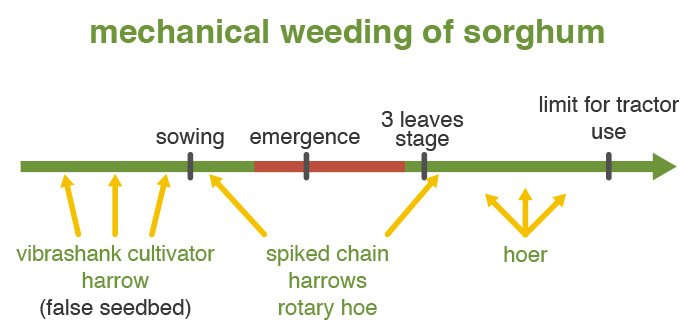
First, sowings must be undertaken on a clean soil, and plots of land likely to be invaded by summer grasses (such as proso millet and Johnsongrass) should be avoided, as there is no efficient chemical solution against them.
Sorghum is a demanding crop during sowing. It is important that sorghum emerges quickly and homogeneously to facilitate weed control and limit competition between sorghum and summer grasses notably. Due attention must therefore be paid to seedbed preparation and to the quality of sowing in order to obtain a satisfying soil-seed contact, and to sow on a warm soil (soil temperature must be higher than 12°C) at a sufficient depth (3 to 4 cm) allowing to limit the sensitivity to herbicides, particularly root graminicides, used on filtering soil or before a rainy period.















